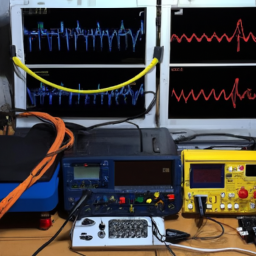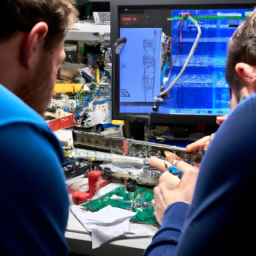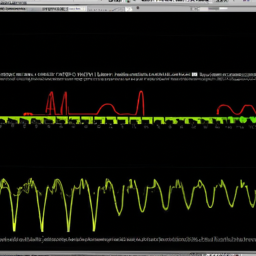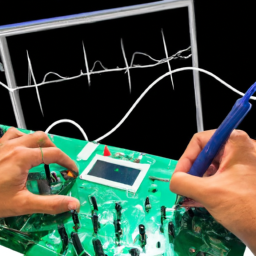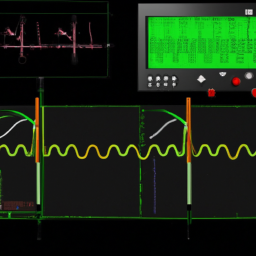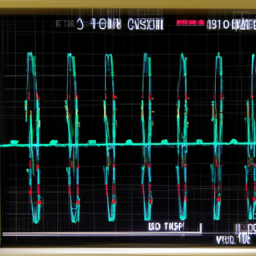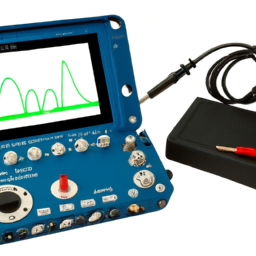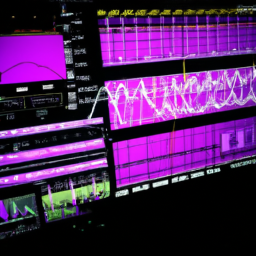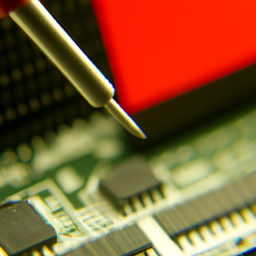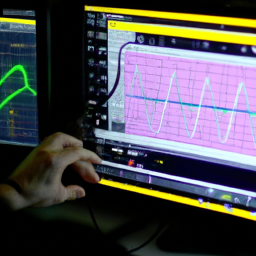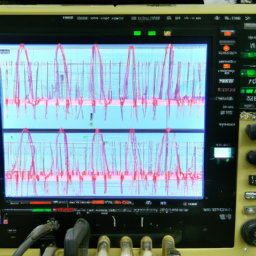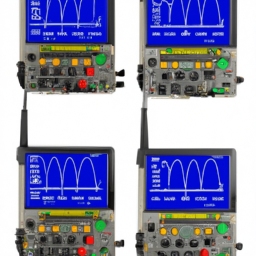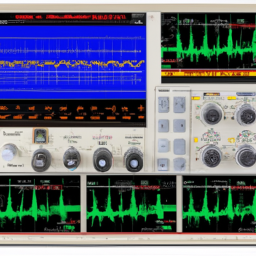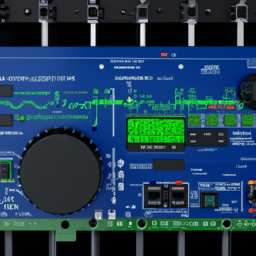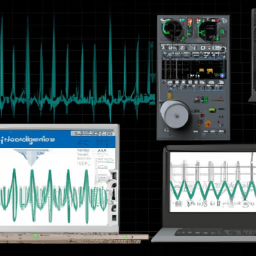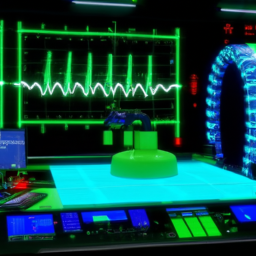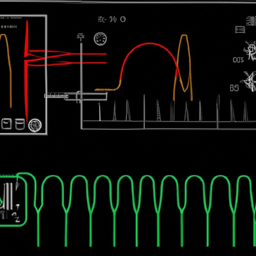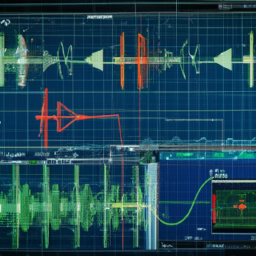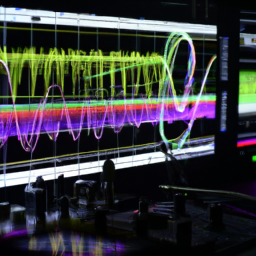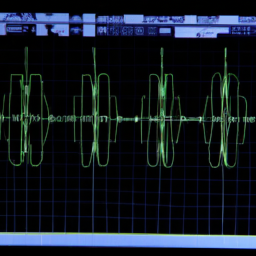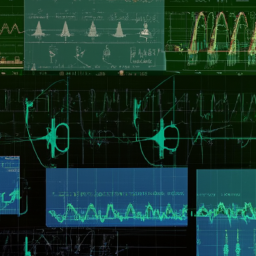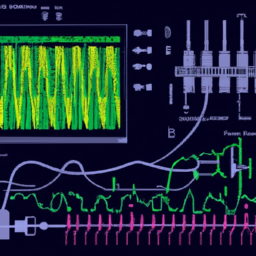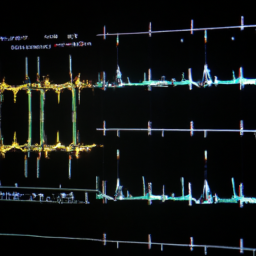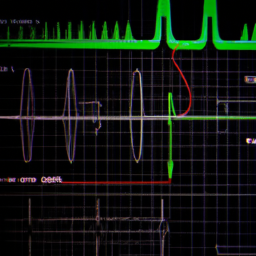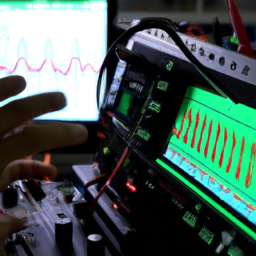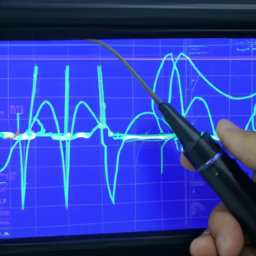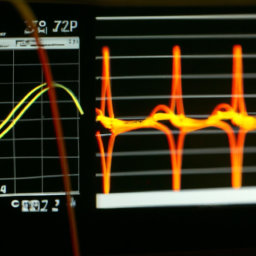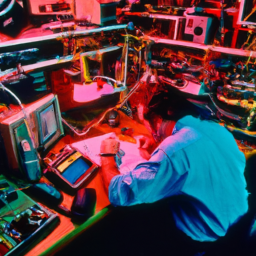Did you know that power issues are responsible for a significant number of failures in embedded systems? In fact, studies show that up to 70% of these failures are caused by power-related problems.
So, if you’re working with embedded systems, it’s crucial to have the right tools to diagnose and resolve these issues effectively. One such tool is an oscilloscope, a device that allows you to visualize and analyze electrical waveforms.
In this article, we will guide you through the process of using an oscilloscope to debug power issues in embedded systems. We will start by explaining the basics of oscilloscope operation and how to set it up for power issue debugging.
Then, we will show you how to measure voltage and current waveforms and identify abnormal power patterns and fluctuations. Finally, we will demonstrate how to use triggering and measurement tools for accurate analysis and provide you with troubleshooting techniques to resolve power-related problems.
So, let’s get started and become an expert in debugging power issues in embedded systems with an oscilloscope.
Key Takeaways
- Power issues in embedded systems are responsible for a significant number of failures, with up to 70% of failures caused by power-related problems.
- Oscilloscopes are essential tools for diagnosing and resolving power issues in embedded systems, as they allow for visualization and analysis of electrical waveforms.
- Proper setup of the oscilloscope is crucial for accurate analysis, including adjusting the timebase, voltage range, and enabling triggering.
- Power analysis techniques, such as measuring ripple voltage and current consumption, can help pinpoint the root cause of power problems in embedded systems.
Understand the Basics of Oscilloscope Operation
To better understand the basics of oscilloscope operation, you should familiarize yourself with the various control knobs and buttons. These include the time base, vertical sensitivity, and trigger settings. You should also learn how to properly interpret the waveform displayed on the screen.
Oscilloscope troubleshooting involves using the instrument to analyze and debug power issues in embedded systems. By connecting the oscilloscope probe to different points in the circuit, you can measure voltage levels and observe the waveform characteristics. This allows you to identify power irregularities such as voltage spikes, noise, or fluctuations.
Additionally, power analysis techniques like measuring ripple voltage, transient response, and current consumption can help pinpoint the root cause of power-related problems in embedded systems. Understanding the basics of oscilloscope operation is essential for effectively using this tool in diagnosing power issues.
Set Up Your Oscilloscope for Power Issue Debugging
Start by adjusting the settings on your scope to capture the subtle fluctuations and hidden mysteries lurking within the electrical currents of your device. To set up your oscilloscope for power issue debugging, follow these steps:
-
Adjust the timebase: Set the timebase to a suitable value to capture the waveform of interest. This will allow you to visualize the voltage over time and identify any abnormalities or fluctuations.
-
Set the voltage range: Ensure that the voltage range is properly set to accommodate the expected voltage levels in your system. This will prevent any clipping or distortion of the waveform.
-
Enable triggering: Use the triggering feature to stabilize the waveform and capture the desired signal. Adjust the trigger level and type to accurately capture and analyze the power issues.
-
Use voltage measurements: Utilize the oscilloscope’s built-in voltage measurement tools to measure various parameters such as peak-to-peak voltage, RMS voltage, and frequency. This will help you identify common power issues in embedded systems and evaluate the effectiveness of your power supply design.
By properly setting up your oscilloscope, you can effectively identify and analyze power issues in embedded systems, ensuring the best practices for power supply design are met.
Measure Voltage and Current Waveforms
Adjusting the settings on your scope, you can capture the mesmerizing dance of voltage and current waveforms, revealing the hidden secrets within your device’s electrical currents.
To measure voltage waveforms accurately, connect your oscilloscope’s probe to the point where you want to measure the voltage. Set the vertical scale and position to ensure the waveform is visible and centered on the screen. Adjust the timebase to capture the entire waveform, adjusting the horizontal scale as needed.
To measure current waveforms, use a current probe or a shunt resistor in series with the circuit. Connect the probe or resistor to the oscilloscope and set the appropriate current scale.
Start capturing the waveforms and analyze them using waveform interpretation techniques. Look for abnormalities, such as spikes, noise, or irregularities in the waveforms, which can help identify power issues.
Combine waveform interpretation with power analysis techniques to gain a comprehensive understanding of the power behavior in your embedded system.
Identify Abnormal Power Patterns and Fluctuations
Discover the hidden anomalies and fluctuations in power patterns that can wreak havoc on your device’s performance. To ensure optimal power efficiency and stability in your embedded system, it is important to identify and address any abnormal power patterns and fluctuations. One way to achieve this is by using an oscilloscope to analyze power consumption and perform power factor correction. By measuring the voltage and current waveforms, you can determine if there are any irregularities that may be affecting the power efficiency of your system. An oscilloscope allows you to visualize these waveforms and identify any abnormalities such as voltage spikes, harmonics, or phase shifts. With this information, you can take necessary steps to rectify any power issues and ensure the smooth operation of your embedded system.
| Power Issue | Possible Cause | Solution | ||||
|---|---|---|---|---|---|---|
| Voltage Spikes | Faulty power supply | Check and replace power supply unit | ||||
| Harmonics | Non-linear loads | Install power filters or harmonic filters | ||||
| Phase Shifts | Imbalanced loads | Rebalance loads or install phase correction | ||||
| Power Instability | Inadequate power capacity | Upgrade power supply or add capacitance | ||||
| Excessive Power Draw | Inefficient components | Optimize component selection and design | Excessive Power Draw | Inefficient components | Optimize component selection and design, or increase power efficiency through better cooling and ventilation. |
Use Triggering and Measurement Tools for Accurate Analysis
Get ready to dive into the world of accurate analysis with triggering and measurement tools. These tools will take you on a journey of exploring and understanding the intricate details of your system’s performance.
When it comes to analyzing power consumption in embedded systems, oscilloscopes prove to be indispensable tools. By utilizing triggering features, you can capture specific power events or anomalies. This allows for an in-depth investigation of power supply noise. Triggering on voltage or current levels, glitches, or specific waveforms helps you identify and analyze power fluctuations that may be causing issues in your system.
Additionally, measurement tools such as cursors and markers enable precise measurements of power-related parameters. These parameters include voltage levels, current draw, and power factor. With these tools at your disposal, you can accurately analyze power issues and make informed decisions to improve the performance and stability of your embedded system.
Troubleshoot and Resolve Power-related Problems in Embedded Systems
Now that you’ve learned about using triggering and measurement tools for accurate analysis, let’s move on to the next step in debugging power issues in embedded systems. In this subtopic, we’ll focus on troubleshooting and resolving power-related problems in your systems.
Power supply analysis is crucial for identifying any issues that may arise due to voltage fluctuations or inadequate power delivery. By using an oscilloscope, you can measure and analyze the power supply waveform to ensure it meets the system’s requirements.
Additionally, understanding power management techniques is essential for optimizing and controlling power consumption in your embedded systems. Through effective power management, you can extend battery life, prevent overheating, and avoid system failures.
To help you grasp these concepts better, here are four key points to consider:
- Measure and analyze the power supply waveform using an oscilloscope.
- Identify and rectify voltage fluctuations or inadequate power delivery.
- Implement power management techniques to optimize power consumption.
- Extend battery life and prevent system failures through effective power management.
Frequently Asked Questions
Can an oscilloscope be used to measure power issues in non-embedded systems?
Yes, an oscilloscope can be used to measure power issues in non-embedded systems. However, there are limitations to consider. While an oscilloscope can measure voltage and current waveforms, it may not provide accurate measurements of power parameters like power factor or total harmonic distortion. Additionally, the oscilloscope’s bandwidth and voltage range must be suitable for the specific system being tested. It’s important to carefully analyze the oscilloscope’s capabilities and the requirements of the non-embedded system before proceeding with power measurements.
What are some common power-related problems in embedded systems that can be identified using an oscilloscope?
Common power-related problems in embedded systems that can be identified using an oscilloscope include voltage spikes, noise, and irregular waveforms. These issues can lead to system instability, malfunction, or even failure. By using an oscilloscope, you can measure and analyze the power signals to identify abnormalities.
Common techniques include measuring voltage levels, checking for noise, and analyzing waveforms. Troubleshooting steps involve comparing the measured signals with expected values and identifying any deviations.
Are there any specific precautions or safety measures to consider when using an oscilloscope for power issue debugging?
When using an oscilloscope for power issue debugging, it’s crucial to take certain precautions and follow safety measures.nnFirstly, ensure that the oscilloscope is properly grounded and connected to a stable power source.nnUse appropriate probes and cables that can handle the voltage levels involved.nnTake care to avoid touching any live circuits or exposed conductors.nnAdditionally, read and understand the oscilloscope’s user manual to operate it correctly and avoid any potential hazards.
Can an oscilloscope accurately measure power fluctuations in high-frequency circuits?
When it comes to measuring power fluctuations in high-frequency circuits, an oscilloscope can provide accurate measurements. It’s precise measurement accuracy allows you to capture and analyze the waveforms of these power fluctuations. By utilizing its advanced triggering capabilities and high bandwidth, you can effectively observe and diagnose any issues related to power fluctuations in your circuits. Remember to properly set up the oscilloscope and choose the appropriate probes for optimal measurement accuracy.
What are some alternative methods or tools for debugging power issues in embedded systems if an oscilloscope is not available?
When an oscilloscope isn’t available for debugging power issues in embedded systems, there are alternative methods and power analysis techniques that can be used. One method is using a multimeter to measure the voltage and current at various points in the circuit.
Another option is using a power analyzer, which can provide detailed information about power consumption and efficiency.
Additionally, thermal imaging cameras can be used to identify hotspots and overheating components, indicating potential power issues.
Conclusion
In conclusion, using an oscilloscope to debug power issues in embedded systems is a crucial step in ensuring the smooth operation of your devices. By understanding the basics of oscilloscope operation and setting it up properly, you can accurately measure voltage and current waveforms.
Through the identification of abnormal power patterns and fluctuations, you can use triggering and measurement tools to analyze the data with precision. With this level of detailed analysis, you’ll be able to troubleshoot and resolve power-related problems effectively.
Overcome any skepticism by experiencing firsthand the power of using an oscilloscope in your embedded systems.


